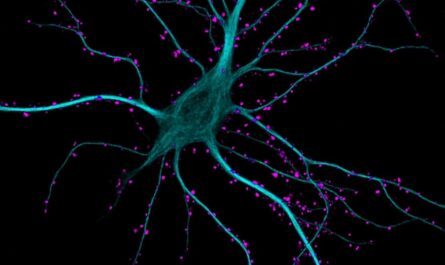Adhesive materials such as sticky notes and tape are known for their ease of attachment but can pose challenges when it comes to removal. This phenomenon, known as adhesion hysteresis, is particularly prominent in soft, elastic materials where the process of forming adhesive contact is easier than breaking it. A recent study conducted by researchers from the University of Freiburg, the University of Pittsburgh, and the University of Akron has shed light on the underlying factor contributing to this adhesion hysteresis – surface roughness of the adherent soft materials.
Through a series of experimental observations and simulations, the research team uncovered that surface roughness plays a crucial role in influencing the adhesion behavior of soft materials. The roughness of the surface interferes with the separation process, causing the materials to detach in small, abrupt movements, thereby releasing parts of the adhesive bond incrementally.
Dr. Antoine Sanner and Prof. Dr. Lars Pastewka from the Department of Microsystems Engineering at the University of Freiburg, along with Dr. Nityanshu Kumar and Prof. Dr. Ali Dhinojwala from the University of Akron, and Prof. Dr. Tevis Jacobs from the University of Pittsburgh, have shared their findings in a publication in Science Advances.
Dr. Sanner noted that the research findings pave the way for the precise control of adhesion properties in soft materials through surface roughness, opening up possibilities for the development of new and improved applications in soft robotics and production technology. For instance, advancements in grippers or placement systems could be made possible through this understanding of adhesion mechanics.
The simulations conducted by the researchers in Freiburg and the adhesion experiments carried out at the University of Akron clearly showcased the distinct jumping motion associated with the detachment process. This sudden movement during separation was initially hypothesized in the 1990s as a potential cause of adhesion hysteresis, but previous theoretical work had been limited to simplified surface properties, as mentioned by Kumar.
Prof. Jacobs highlighted the significance of the study in calculating adhesion hysteresis for realistic surface roughness, attributing this achievement to the efficiency of the numerical model utilized and the meticulous surface characterization performed by the researchers at the University of Pittsburgh. The detailed understanding of how surface roughness influences adhesion behavior in soft materials opens up avenues for further exploration in material science and engineering.
In conclusion, this research underscores the importance of considering surface roughness in understanding and manipulating adhesion properties in soft materials, offering valuable insights for future advancements in various fields including soft robotics and production technology.
*Note:
1. Source: Coherent Market Insights, Public sources, Desk research
2. We have leveraged AI tools to mine information and compile it




